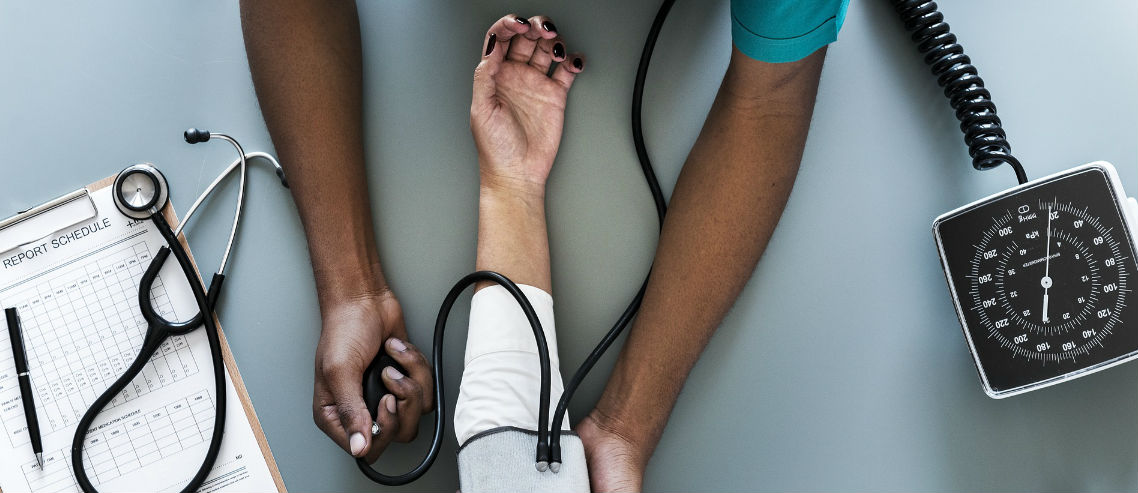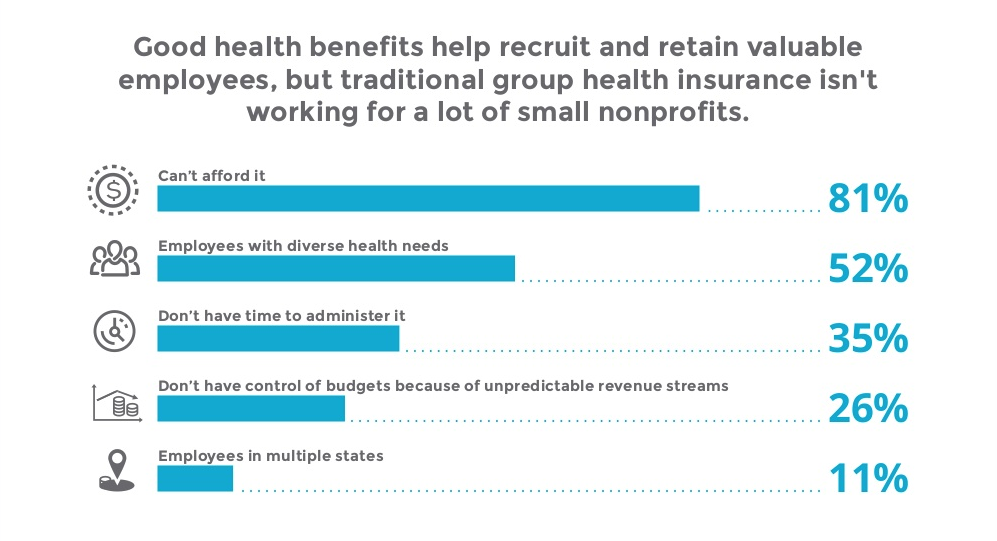The smart Trick of Medicare Advantage Agent That Nobody is Discussing
The smart Trick of Medicare Advantage Agent That Nobody is Discussing
Blog Article
The smart Trick of Medicare Advantage Agent That Nobody is Talking About
Table of ContentsMore About Medicare Advantage AgentUnknown Facts About Medicare Advantage AgentNot known Factual Statements About Medicare Advantage Agent

follows from confusing the relatively young age profile of the without insurance with the much better wellness, typically, of younger persons. This obscures the web link in between wellness condition and wellness insurance coverage. For those without accessibility to workplace health insurance coverage, bad health and wellness is a prospective obstacle to buying nongroup coverage since such protection might be highly valued, omit pre-existing conditions, or be merely inaccessible. The number of uninsured Americans is not especially big and has not changed in recent times. Seven out of ten respondents in a country wide depictive survey thought that less Americans did not have medical insurance than really do(Fronstin, 1998). About fifty percent(47 percent )believed that the variety of people without medical insurance lowered or stayed consistent over the last fifty percent of the last decade(Blendon et al., 1999). This drop of nearly 2 million in the variety of individuals 'without insurance (a reduction
of about 4 percent)is certainly a favorable modification. With a softer economic climate in 2000 the most recent reported gains in insurance coverage may not proceed(Fronstin, 2001 ). The decrease in the variety of without insurance will not proceed if the economic situation remains sluggish and health and wellness care prices continue to surpass rising cost of living. This is due to the fact that the data were gathered for a duration of solid economic efficiency. Of the estimated 42 million individuals that were uninsured, almost about 420,000(concerning 1 percent)were under 65 years old, the age at which most Americans come to be qualified for Medicare; 32 million were adults in between ages 18 and 65, around 19 percent of all adults in this age; and 10 million were children under 18 years of age, about 13.9 percent of all youngsters (Mills, 2000). These price quotes of the number of persons uninsured are created from the yearly March Supplement to the Current Population Survey (CPS), carried out by the Census Bureau. Unless or else kept in mind, nationwide quotes of individuals without medical insurance and percentages of the populace with various type of insurance coverage are based on the CPS, one of the most extensively utilized source of quotes of insurance policy protection and uninsurance rates. These studies and the quotes they produce are explained briefly in Table B. 1 in Appendix B - Medicare Advantage Agent. These studies vary in size and tasting approaches, the concerns that are asked concerning insurance
Medicare Advantage Agent - Questions
coverage, and the moment period over which insurance policy coverage or uninsurance is gauged(Lewis et al., 1998, Fronstin, 2000a ). Still, the CPS is especially valuable because it produces yearly estimates reasonably promptly, reporting the previous year's insurance protection estimates each September, and since it is the basis for a constant collection of quotes for more than two decades, permitting analysis of fads in coverage in time.

What Does Medicare Advantage Agent Mean?
Over a three-year duration starting early in 1993, 72 million people, 29 percent of the U.S. populace, lacked protection for at the very least one month. Within a single year(1994), 53 million people experienced at least a month without coverage(Bennefield, 1998a). Six out of every 10 uninsured adults are themselves used. Although functioning does boost the possibility that one and one's family members will have insurance coverage, it is not a warranty. Also members of family members with 2 permanent breadwinner have practically a one-in-ten opportunity of being without insurance (9.1 percent uninsured rate)(Hoffman and Pohl, 2000 ). The partnership between medical insurance and access to care is well developed, as recorded later on in this phase. The relationship between health and wellness insurance policy and health outcomes is neither direct nor easy, an extensive medical and wellness solutions research literature web links wellness insurance protection
to improved enhanced accessibility care, better far betterTop quality and improved personal and population health statusCondition The second report, on individual health end results for uninsured adults, is stood for by the innermost circle of the number, while the third report, on family wellness, includes the subjects of the 2nd record yet highlights a various unit of analysis, specifically, the family. The sixth report in the collection will certainly present information regarding approaches and efforts carried out in your area, statewide, or country wide to attend to the absence of insurance and its damaging impacts. Levels of analysis for checking out the results of uninsurance. This discussion of medical insurance protection focuses mostly on the united state populace under age 65 due to the fact that virtually all Americans 65 and older have Medicare or various other public protection.
It focuses specifically on those without any kind of health insurance coverage for any type of length of time. The issues faced by the underinsured are in some aspects similar to those encountered by the uninsured, although they are typically less extreme. Uninsurance and underinsurance, however, involve noticeably various plan issues, and the methods for resolving them may vary. Throughout this research and the five records to follow, the major emphasis is on individuals with no wellness insurance policy and therefore no assistance in paying for healthcare past what is available through charity and safeguard establishments. Medical insurance is a powerful variable impacting invoice of treatment because both individuals and medical professionals reply to the out-of-pocket rate of solutions. Medical insurance, however, is neither necessary nor enough to get to clinical services. However, the independent and direct effect of health and wellness
insurance policy coverage on accessibility to health solutions is well established. Others will certainly acquire the health treatment they require also without medical insurance, by paying for it out of pocket or seeking it from suppliers important source that use care complimentary or at highly subsidized their explanation rates. For still others, wellness insurance coverage alone does not guarantee receipt of care since of various other nonfinancial obstacles, such as a lack of health and wellness treatment carriers in their area, limited accessibility to transport, illiteracy, or etymological and social differences. Official research study about without insurance populaces in the USA dates to the late 1920s and very early 1930s when the Board on the Price of Medical Treatment generated a series of records concerning financing medical professional workplace gos to and hospitalizations. This problem became significant as the varieties of clinically indigent climbed up during the Great Anxiety. Empirical researches constantly sustain the link between accessibility to care and boosted health end results(Bindman et al., 1995; Starfield, 1995 ). Having a routine source of care can be considered a predictor of accessibility, rather than a straight action of it, when health end results are themselves utilized as access indicators. This expansion of the notion of gain access to dimension was made by the IOM Committee on Keeping Track Of Gain Access To to Personal Health And Wellness Care Services(Millman, 1993, p. Whether moms and dads are insured appears to affect whether their youngsters obtain treatment as well as just how much careeven if the kids themselves have insurance coverage(Hanson, 1998). The health and wellness of parents can influence their capability to care for their children and the level of family members stress and anxiety. Bothering with their youngsters's access to care is itself a resource of anxiety for moms and dads. Three phases adhere to in this record. Phase 2 gives a summary of how employment-based medical insurance, public programs and specific insurance policy policies run and interact to supply comprehensive however incomplete insurance coverage of the U.S. population. This consists of a testimonial of historical fads and public laws influencing both public and exclusive insurance coverage, a discussion of the communications among the different kinds of insurance, and an evaluation of why individuals relocate from one program to an additional or finish up

Report this page